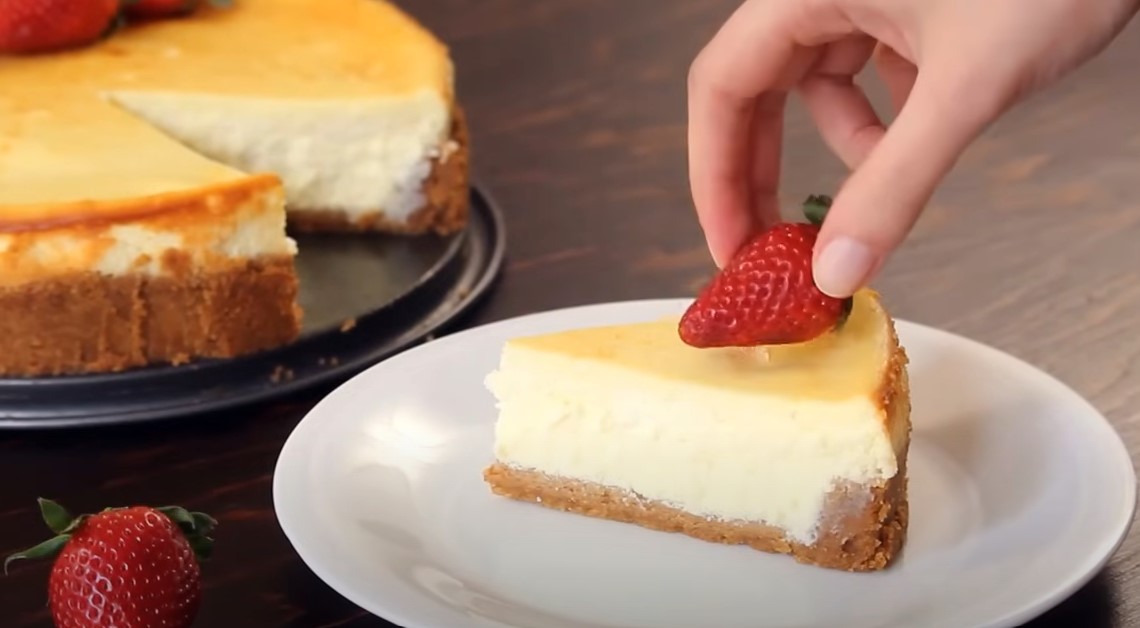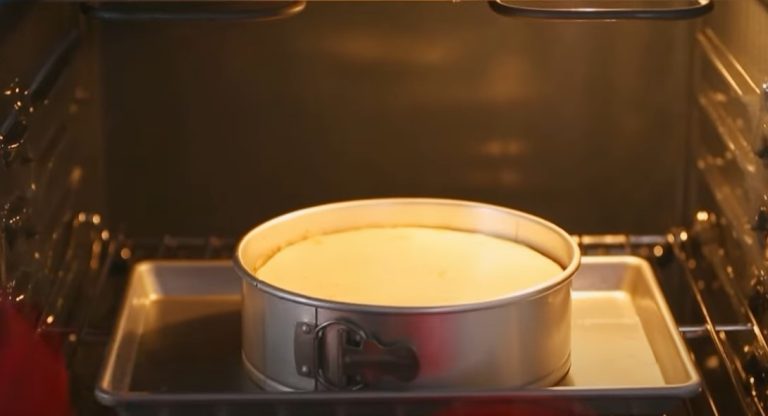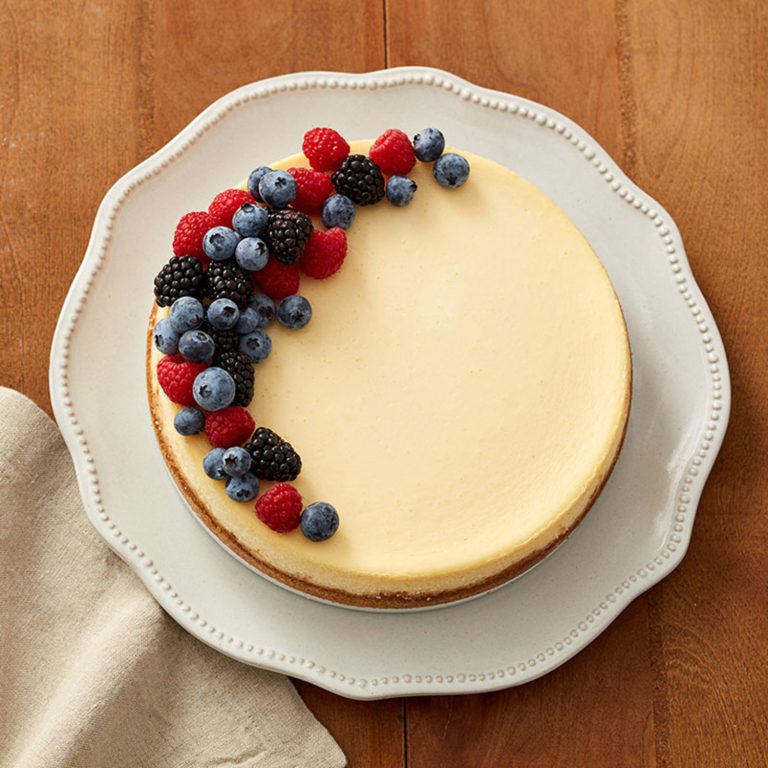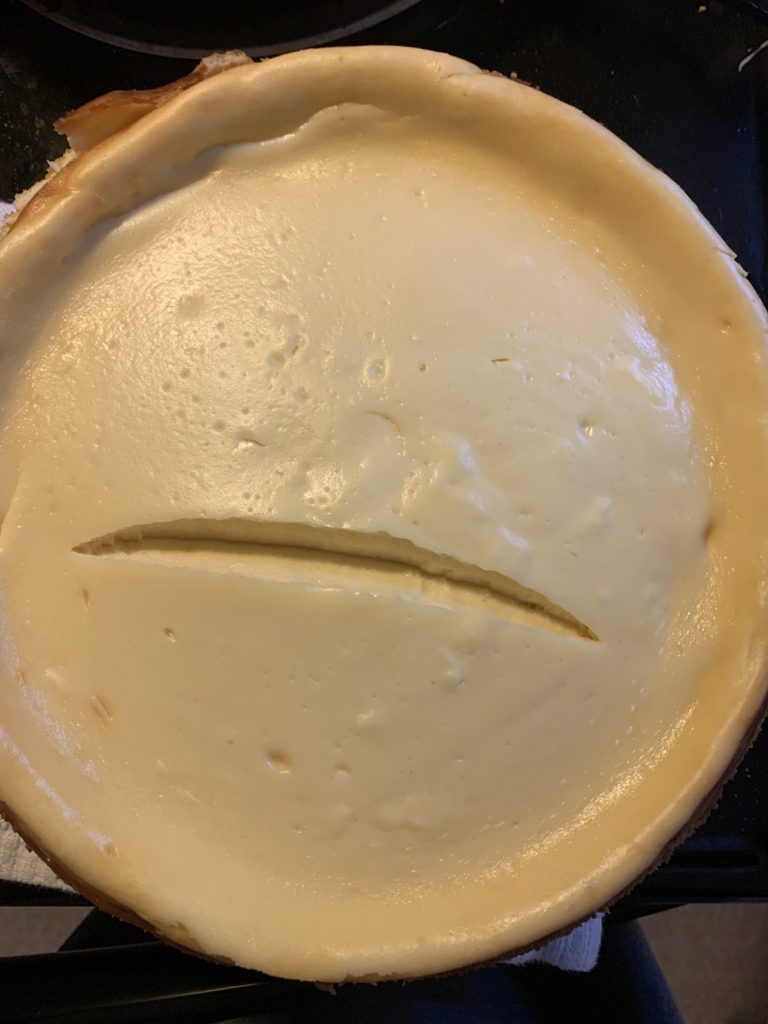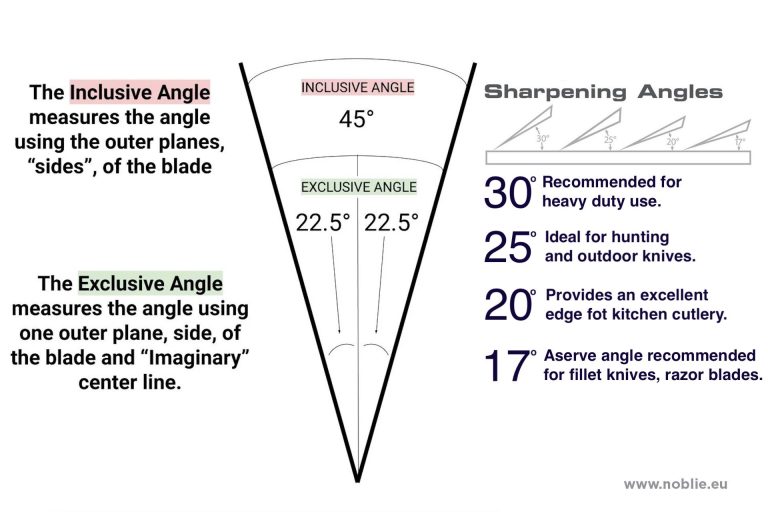How Long Can Cheesecake Sit Out? A Real Life Answer
How long can cheesecake sit out? Cheesecake should not sit out at room temperature for more than 2 hours. Beyond this time, harmful bacteria can start to grow, making it unsafe to eat. If the room is warm (above 90°F or 32°C), the safe time reduces to just 1 hour.
Cheesecake is a delicious dessert enjoyed worldwide, but because it contains dairy and eggs, it is perishable and requires proper handling to ensure safety. Knowing how long it can safely remain out of refrigeration is crucial for hosting events or storing leftovers.
In this article, we will explore the science behind cheesecake spoilage, proper storage methods, and answer common questions about handling and enjoying cheesecake safely.
What Is Cheesecake Sit Out?

When we say “cheesecake sit out,” we mean the amount of time cheesecake is left outside the refrigerator at room temperature or warmer. This usually happens after you’ve baked it or taken it out to serve. During this time, the cheesecake is exposed to the air, warmth, and sometimes humidity, which affects how long it stays safe to eat.
Because cheesecake is made with perishable ingredients like cream cheese, eggs, and sometimes milk or cream, it is sensitive to temperature. When left out too long without refrigeration, harmful bacteria can start to grow, making the cheesecake unsafe to eat.
So, “cheesecake sit out” refers to the time cheesecake spends unrefrigerated and the safety concerns about how long it can be left at room temperature before it spoils or becomes risky to eat. Understanding this helps you handle cheesecake safely, whether you’re hosting a party or storing leftovers.
How Long Can Cheesecake Sit Out?
Cheesecake is a dairy-based dessert, often made with cream cheese, eggs, sugar, and sometimes sour cream or heavy cream. These ingredients make it highly perishable and susceptible to bacterial growth if left unrefrigerated for too long.
The USDA recommends that perishable foods, including cheesecake, should not be left out at room temperature for more than 2 hours. This rule applies when the ambient temperature is below 90°F (32°C). If the temperature is above 90°F (such as at an outdoor picnic or a hot kitchen), the safe limit is reduced to just 1 hour.
Why is this so important? The bacteria that cause foodborne illnesses thrive between 40°F and 140°F, known as the “danger zone.” Cheesecake left in this temperature range for too long can become a breeding ground for harmful pathogens like Listeria, Salmonella, and E. coli.
Factors Affecting Cheesecake Safety
- Temperature: The higher the temperature, the faster bacteria multiply.
- Ingredients: Cheesecakes with fresh fruit toppings or no preservatives spoil faster.
- Storage Environment: Humidity and exposure to sunlight can accelerate spoilage.
Signs That Cheesecake Has Gone Bad
- Sour or off smell
- Change in texture (slimy or overly soft)
- Visible mold or discoloration
- Off taste
If you notice any of these, discard the cheesecake immediately.
Proper Storage Tips
- Refrigerate cheesecake within 2 hours of serving.
- Cover it tightly with plastic wrap or store in an airtight container.
- For longer storage, freeze cheesecake wrapped tightly in plastic wrap and aluminum foil. It can last 1-2 months frozen.
Reheating and Serving
Cheesecake is typically enjoyed chilled, straight from the refrigerator, because its creamy texture and rich flavor are best preserved when cold. However, some people prefer their cheesecake at room temperature or slightly warmed to enhance its softness and flavor profile.
Can You Reheat Cheesecake?

Reheating cheesecake is possible but must be done carefully to avoid ruining its delicate texture. Unlike some desserts, cheesecake is sensitive to heat because it contains dairy and eggs, which can curdle or separate if overheated.
The best way to warm cheesecake is to let it sit at room temperature for 15 to 30 minutes before serving. This gentle warming brings out the flavor without compromising texture.
If you need to reheat cheesecake more quickly, here are safe methods:
- Microwave (Short Bursts): Heat in very short bursts of 10–15 seconds on low power. Check after each burst to avoid overheating.
- Oven (Low Temperature): Wrap the cheesecake slice in aluminum foil and warm at 300°F (150°C) for 10–15 minutes. Avoid high heat to prevent drying out.
Serving Tips for Cheesecake
- Serve cheesecake chilled for the classic texture.
- If using fruit toppings or sauces, add them fresh before serving.
- Allow cheesecake to sit out no longer than 2 hours to keep it safe.
- Use a warm knife to slice cheesecake cleanly and prevent cracking.
Proper reheating and serving help maintain cheesecake’s creamy texture and delicious taste, making sure you enjoy every bite safely and deliciously.
Frequently Asked Questions
1. Can cheesecake be left out overnight?
No, cheesecake should not be left out overnight. Leaving it out for more than 2 hours increases the risk of harmful bacteria growth and foodborne illness.
2. How do I know if my cheesecake has gone bad?
Signs of spoilage include a sour smell, mold growth, discoloration, or a change in texture. If in doubt, throw it away.
3. Is it safe to eat cheesecake that was left out for 3 hours?
No, eating cheesecake left out for more than 2 hours (or 1 hour in hot conditions) is unsafe due to potential bacterial contamination.
4. How should cheesecake be stored to keep it fresh?
Store cheesecake in the refrigerator covered tightly with plastic wrap or in an airtight container. For longer storage, freeze it properly wrapped.
5. Can cheesecake be frozen and how long does it last?
Yes, cheesecake freezes well. Wrapped tightly, it can last 1 to 2 months in the freezer without losing quality.
Conclusion
Cheesecake is a rich and creamy dessert that requires careful handling due to its dairy and egg content. To keep it safe, cheesecake should never sit out at room temperature for more than 2 hours, or 1 hour if the environment is warm. Proper refrigeration and storage are essential to prevent foodborne illnesses and maintain the cheesecake’s delicious texture and flavor. Always err on the side of caution—when in doubt, discard any cheesecake that has been left out too long. Enjoy your cheesecake safely by following these guidelines and savor every bite without worry.
Related Recipes

